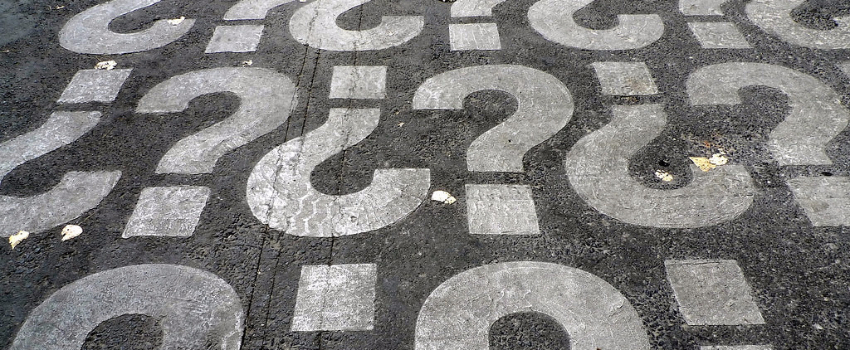Did Mozart outsell Beyoncé in CD sales in 2016? Can you taste garlic with your feet? In 2016 it was impossible to go online without hearing the term “fake news” (indeed the phrase took on a life of its own during the presidential election) and in 2017 it’s only getting worse.
More and more websites are popping up and flooding our brains with stories that are twisted, skewed or outright wrong—many purposefully so—typically for financial gain.
The scariest part is that it’s often incredibly difficult to differentiate between real facts and fake news. Wondering how hard? For starters, the answers to the above questions are, surprisingly, yes, opens a new window and yes.
Want to put yourself to the test? Play Factitious, opens a new window—a game created by the American University that presents you with news stories and challenges you to determine whether or not they’re real—and see how attuned your fake news radar is.
If it’s hard enough as adults to call out fake news, kids have it even tougher. How is a young person on the internet supposed to understand the difference between real news and fake news, let alone the countless variations in between: ranging from satire that seems like truth to misleading clickbait to out-and-out political propaganda? If it’s an adult writing it, isn’t it all true?
Unfortunately, there’s no magical solution, no Harry Potter-esque fake news-dispelling wand, and even the most well-meaning of adults gets fooled from time to time. If we want to encourage kids to be curious about the world and inform themselves about what’s going on around them, that means we have to expose them to lies on the internet.
But if we give kids the right tools, we can raise a generation of discerning readers who know how to ask themselves the right questions to determine if a source is trustworthy or not.
How to Identify Fake News: 7 Steps
Learning how to apply healthy skepticism is one of the best ways to hone fake news-identifying skills. One of the best ways to help your child do this is to teach them to question every piece of information—especially the ones they find online.
Encourage kids to ask themselves the following questions when they come across a story (especially one that seems too good or too sensational to be true):
-
How does the article make you feel?
What’s your gut instinct? Is the story trying to make you feel a certain way? Do you feel angry? Do you feel shocked?
-
Is the information plausible?
Does it contradict what you already know about this topic? Does it seem too good to be true? Granted, like the facts about Mozart and garlic earlier, just because something sounds unusual doesn’t mean it’s fake, but it can be a good jumping off point.
-
What credibility does the source have?
Was the site recently created or has it been around for a while? The longer a site has been active, the more time it’s had to show reliability. What other stories do you see on the site? Are they wacky or serious? Does the site have a lot of spelling errors or a strange URL? After all, abcnews.com.co is not the same as abcnews.com and using URLs that sound like real media organizations is a favourite trick of fake news creators.
-
Does the site have a copyright?
Reputable sites, like established media organizations, will typically have a copyright listed at the bottom of the page (like the one that appears below the footer on The Globe and Mail’s site, opens a new window). This can be a good test to determine if a site is trustworthy.
-
Are other sources reporting on this topic?
If you Google this story, do you find lots of other places reporting it? If the original site is the only place you can find the information, then that’s a good sign it may not be true. The internet is full of information, the odds of finding something true that only one site is talking about is unlikely.
-
What’s the author’s expertise?
Look at what experience the author has in the field they’re writing in. Do they have knowledge or experience that makes them a reliable expert? Check for an author bio or, if one isn’t included, try looking the writer up online to see if they have a website, Twitter profile or other online presence that speaks to their expertise in the subject.
-
What’s missing?
Whose point of view is absent from the story? Who benefits from them being left out?
While all of these questions can be used to separate fake news from real, the last one is also a simple mental activity you can use to question any story—even real news—in order to expose bias.
If you’re reading a story about immigrants and no immigrants have been interviewed, what’s missing? If it’s a story about a tiger escaping from a zoo, what if the tiger could talk? Ask your child to practice telling the same story from a different stakeholder’s point of view. Does that change what they think of it?
There are a lot of things to consider when trying to root out fake news. And that doesn’t even begin to cover the minefield that is discerning fact from opinion.
Fight Fake News with Critical Thinking
Ultimately, the best way to build strong, critical thinkers is to encourage kids to read. The more you read, the more you start to understand stories, their mechanics and the tricks, tools and manipulations used by the writers behind them.
Luckily, there’s a magical place in Edmonton where you can find endless collections of books, eBooks, audiobooks, magazines and more for kids (and everyone else in your family) to read.
Check out your local branch of the Edmonton Public Library or visit epl.ca to access our digital material.
We also have multiple kid-centric research databases, opens a new window that students can use when working on fact-based projects for school— our librarians do the legwork to make sure the databases are credible, so you know your kids will only find facts within.
The world’s a complicated place. Together we can fight misinformation with the strongest superpower we have: reading.






Add a comment to: How to Spot Fake News: Tips for Kids